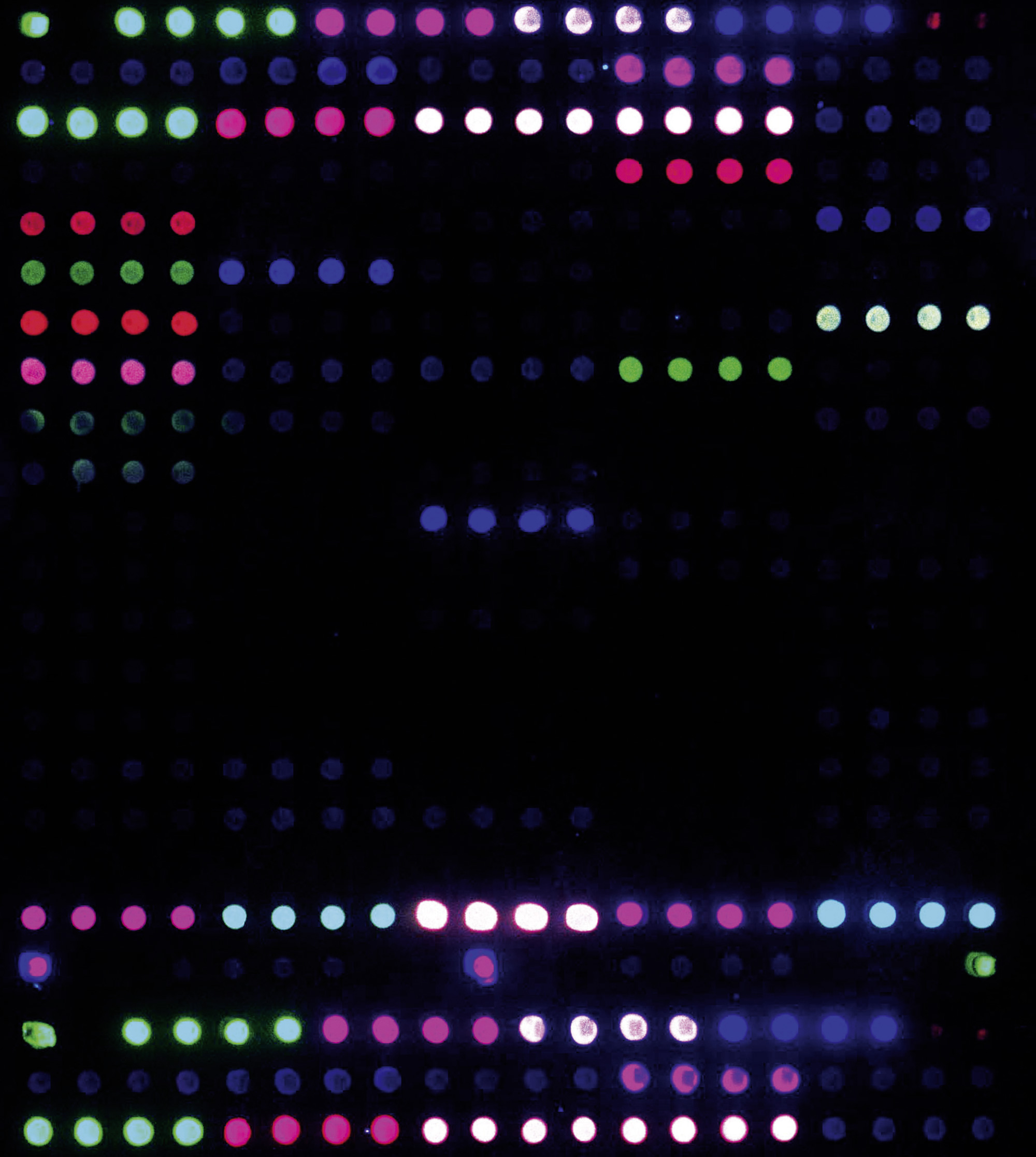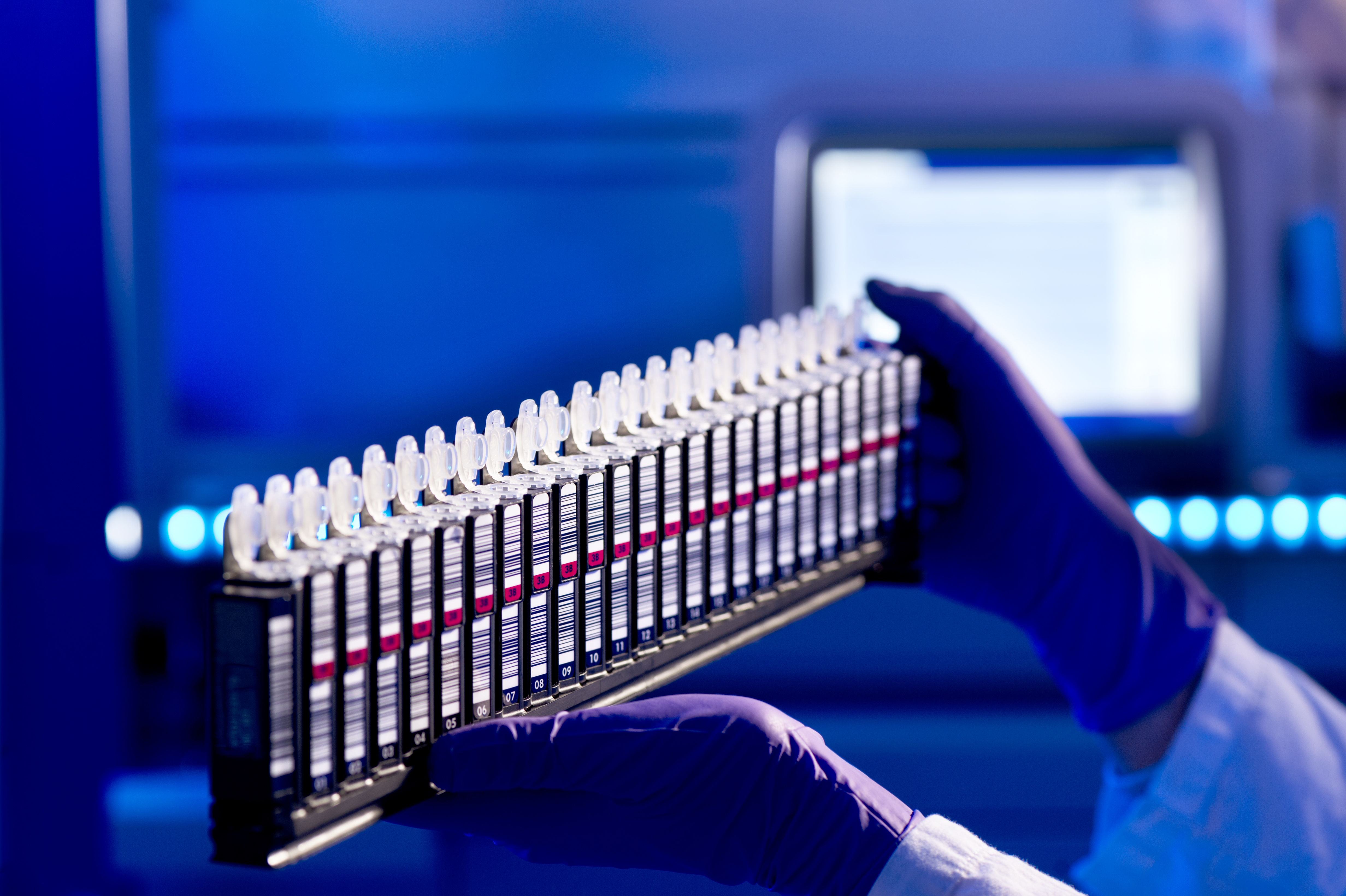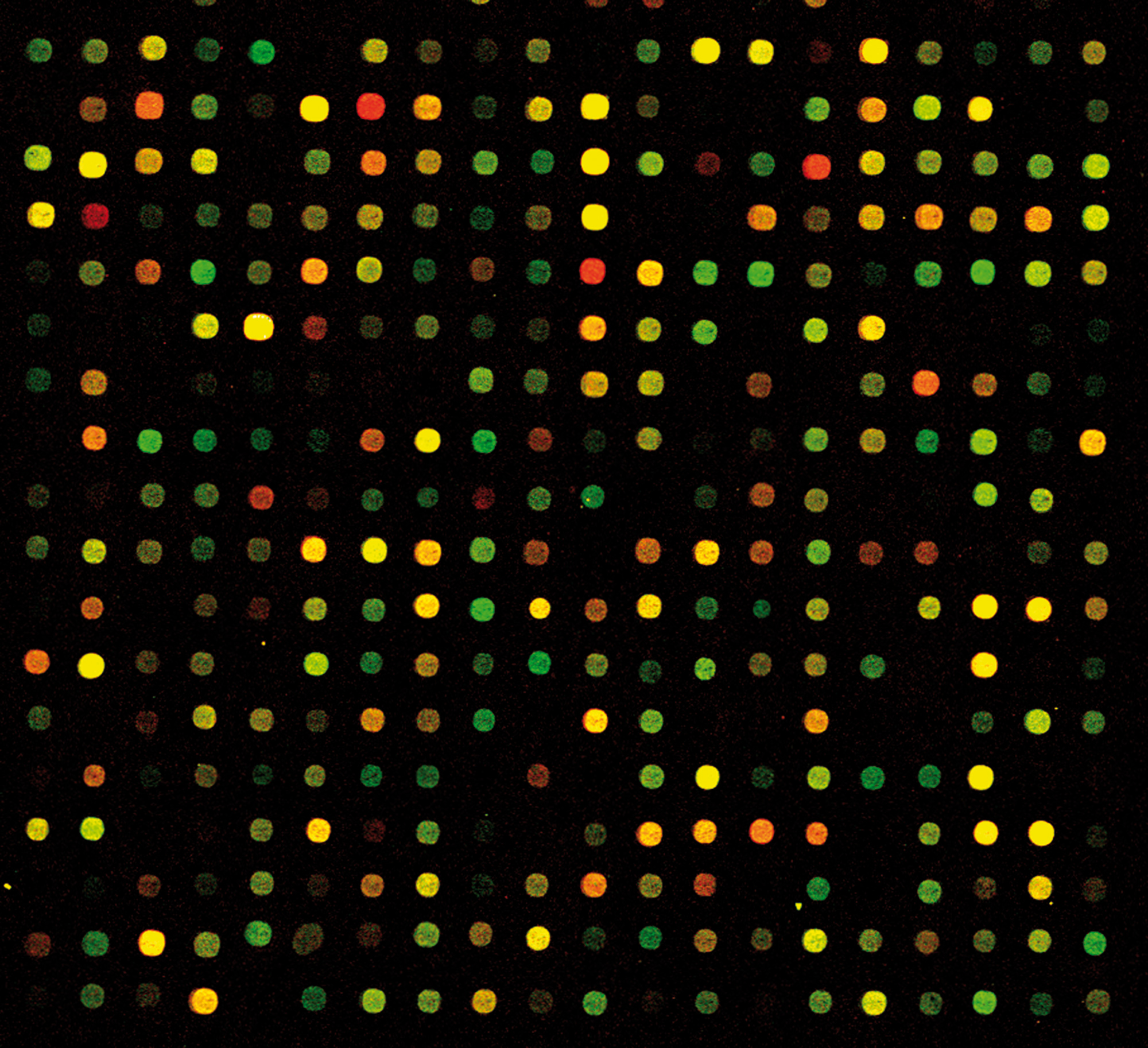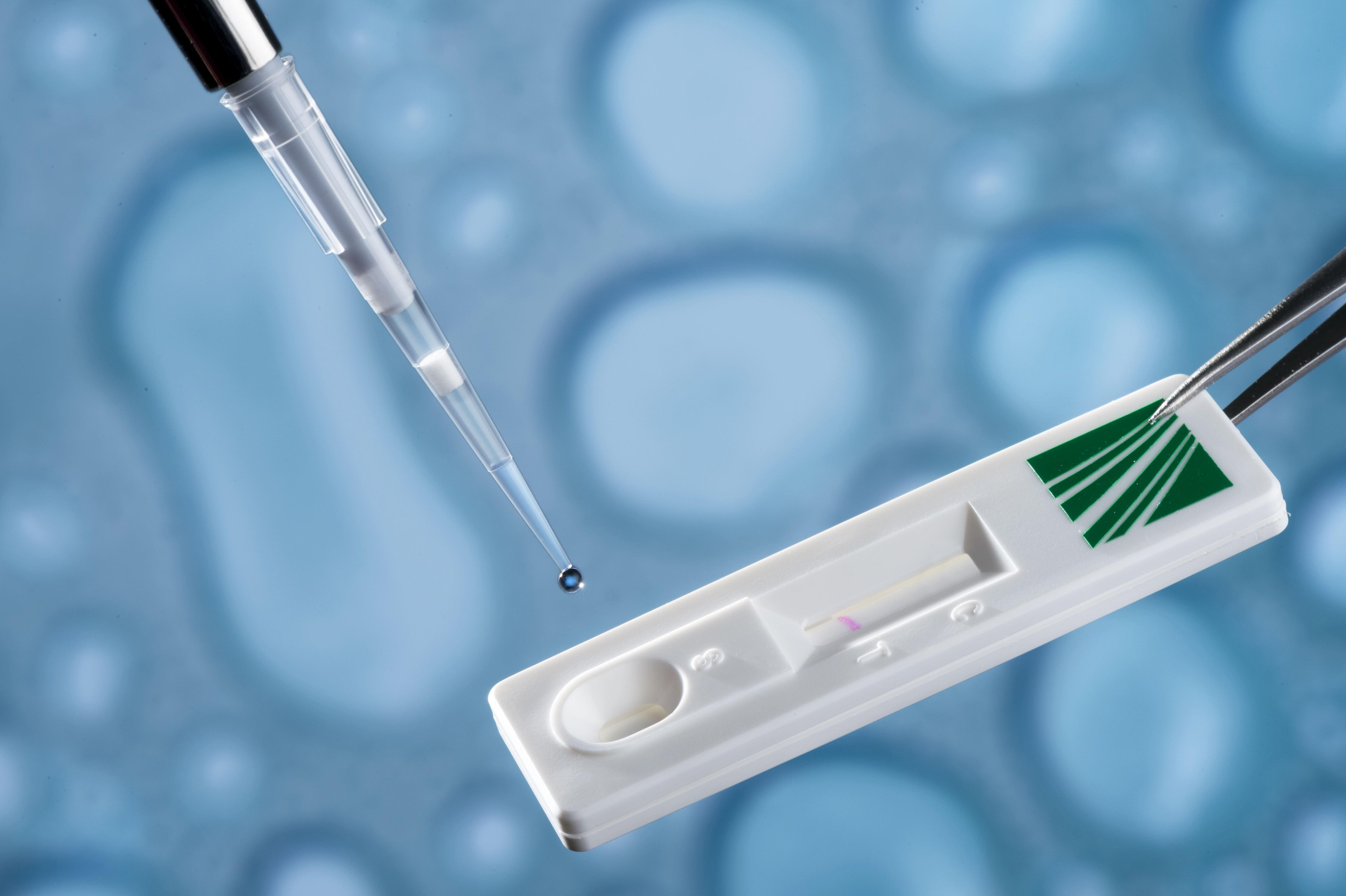The exact diagnosis of a disease is the necessary basis for every therapy and the basis for personalized medicine. To ensure the most unambiguous and specific detection possible, we at Fraunhofer IGB therefore develop new, molecular biological diagnostic methods – based on nucleic acids (diagnostic microarrays, detection methods based on DNA high-throughput sequencing) or using cellular reporter systems (pyrogen assay system). This information can be used to initiate measures for a specific treatment or to develop personalized drugs for different population groups.
Diagnostics
High-throughput sequencing
In diagnostics using high-throughput sequencing, the institute has extensive experience in the indications sepsis, endocarditis, amniotic fluid infections, but also in microbiome studies.
The methods for sepsis diagnostics are currently being validated in multicenter clinical studies. By means of high-throughput sequencing and special bioinformatic evaluation algorithms, we can diagnose the pathogens causing sepsis much faster and more reliably than is possible with blood culture or microbiological detection methods. In January 2017, Fraunhofer IGB founded Noscendo GmbH, which markets rapid diagnostic procedures for sepsis diseases on this basis.
Microarray technologies
Examples of our many years of experience in microarray technology are nucleic acid microarrays for the detection of antibiotic resistance or the diagnosis of respiratory diseases: from probe design to immobilization with contact printing methods.
Especially for the fight against infectious diseases, the combination of methods of functional genome analysis with our expertise in cell culture technology and infection biology leads to a unique selling point in the development of infection models and diagnostics. DNA microarrays are also used here as effective detection systems for pathogens of sepsis or skin infections.
Pyrogen diagnostics using immunoreceptors
For the detection of pyrogens, e.g. bacterial remains that cause feverish reactions up to shock states in humans, we have developed cell-based assay systems that use receptors of the innate immune system to detect the pyrogenic substances. The assays are suitable for testing medical devices and pharmaceutical formulations for pyrogens and can supplement or replace existing tests.
In current work, we have designed a rapid test stick with which bacteria, fungi or viruses can be quickly and easily detected via their fragments – without the need for complex laboratory diagnostics. Using a prototype, we were able to show that the stick works for the bacterial pyrogen LPS. In the future, it will also be used to detect allergens and pathogens in the blood.
 Fraunhofer Institute for Interfacial Engineering and Biotechnology IGB
Fraunhofer Institute for Interfacial Engineering and Biotechnology IGB


